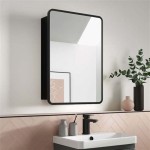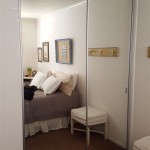How To Hang a Heavy Mirror With D-Rings
Hanging a heavy mirror, especially one equipped with D-rings, requires careful planning and execution to ensure both safety and stability. This process involves understanding the mirror's weight, selecting appropriate hardware, and employing proper hanging techniques.
Assessing the Mirror's Weight and Dimensions
Before beginning, accurately determine the mirror's weight and dimensions. This information is crucial for selecting the correct hardware and ensuring the chosen hanging method provides adequate support. Consult the manufacturer's specifications or use a bathroom scale for weight measurement. Accurate measurements of the mirror's width and height are essential for proper placement and hardware positioning.
Selecting the Appropriate Hardware
Choosing the right hardware is paramount for safely hanging a heavy mirror. The weight capacity of the chosen hardware must exceed the mirror's weight. For heavy mirrors with D-rings, heavy-duty picture wire, D-ring hangers, and appropriate wall anchors are recommended. The type of wall anchor will depend on the wall material—drywall, plaster, or concrete. Consult with a hardware professional to ensure the selected anchors are suitable for the wall type and the weight of the mirror.
Marking the Wall for Hardware Placement
Careful measurement and marking are essential for proper mirror alignment. Decide on the desired height for the mirror and mark this point on the wall. Measure the distance between the D-rings on the back of the mirror. Transfer this measurement to the wall, ensuring the marks are level and equidistant from the center point. These marks indicate the placement for the wall anchors.
Installing the Wall Anchors
The type of wall anchor will dictate the installation process. Follow the manufacturer's instructions carefully. For drywall, toggle bolts or molly bolts are often suitable for heavier mirrors. For plaster walls, it might be necessary to use a heavier-duty anchor, potentially requiring pilot holes. Concrete walls typically require concrete screws or masonry anchors. Ensure the anchors are securely installed and flush with the wall surface.
Attaching the Wire to the D-Rings
Cut a length of heavy-duty picture wire significantly longer than the width of the mirror. Thread one end of the wire through the first D-ring, looping it back through itself and wrapping it securely around the main wire several times. Repeat this process with the other D-ring, ensuring the wire is taut but not overly tight. The wire should form a gentle curve when the mirror is held up.
Hanging the Mirror on the Wall Anchors
Carefully lift the mirror and position the wire over the installed wall anchors. Ensure the wire is securely seated on the anchors. Gently release the mirror to ensure it hangs level and securely. Step back and visually inspect the mirror's positioning, adjusting if necessary.
Verifying Stability and Security
Once the mirror is hanging, gently tug on the bottom corners to verify its stability. The mirror should remain firmly in place. Double-check that the wire is securely wrapped around the D-rings and that the anchors are firmly embedded in the wall. If any movement or instability is detected, re-evaluate the installation and address any potential weaknesses.
Considering Additional Support for Extremely Heavy Mirrors
For exceptionally heavy mirrors, consider using additional support mechanisms, such as a French cleat or a mirror mounting bracket. These systems distribute the weight more evenly and provide enhanced stability. Consult a professional for guidance on selecting and installing appropriate support systems for very heavy mirrors.
Safety Precautions
Throughout the process, prioritize safety. Wear appropriate safety glasses to protect your eyes from dust and debris. Use a stud finder to locate wall studs if possible, particularly for heavier mirrors. If unsure about any aspect of the installation, consult a qualified professional. Proper installation is crucial for preventing accidents and ensuring the longevity of the hanging system.
Wall Material Considerations
Different wall materials require different types of anchors. Drywall requires anchors specifically designed for hollow walls, such as toggle bolts or molly bolts. Plaster walls may require heavier-duty anchors, and pre-drilling pilot holes is often necessary. Concrete walls require masonry anchors or concrete screws. Always choose anchors appropriate for the specific wall material and the weight of the mirror.
Choosing the Right Wire
Select heavy-duty picture wire rated for a weight exceeding that of the mirror. Avoid using thin wire or string, as these are insufficient for supporting heavy objects and pose a safety risk. The wire should be galvanized or stainless steel to resist corrosion and maintain its strength over time.
Leveling the Mirror
Use a level to ensure the mirror hangs straight. Place the level against the top edge of the mirror and adjust the wire placement on the wall anchors until the bubble is centered. This ensures a visually appealing and balanced installation.

How To Hang A Mirror With Wire Pictures Wikihow

How To Hang A Heavy Mirror With Pictures Wikihow

How To Hang A Heavy Mirror The Home Depot

How To Hang A Heavy Mirror The Home Depot

Heavy Picture Mirror Hanging Kit 50 Kg

How To Hang A Heavy Mirror The Home Depot

How To Hang A Heavy Mirror

Mirror D Rings 2024 Favors Com

Making A Mark How To Hang Picture Using D Rings

How To Hang A Heavy Mirror With Pictures Wikihow








